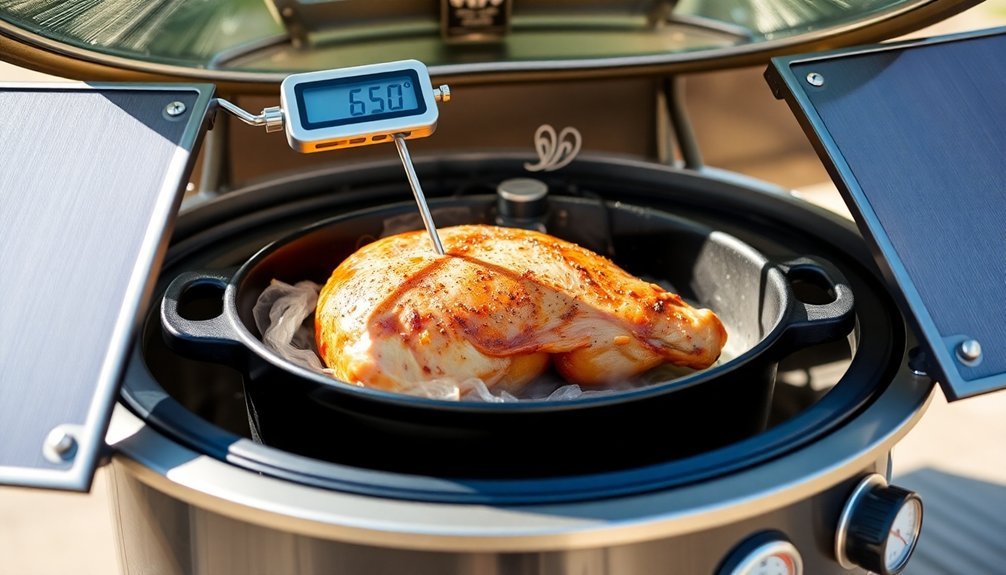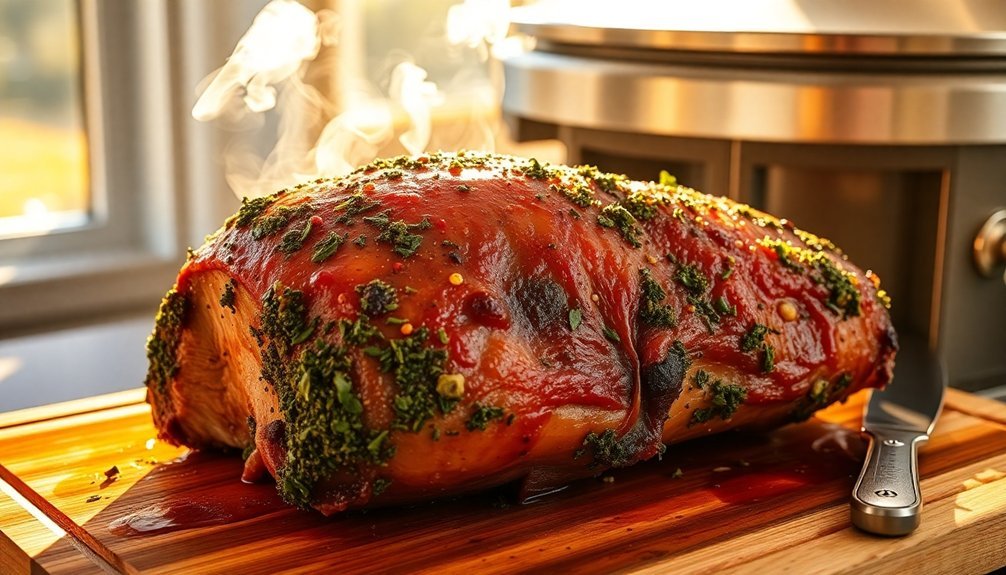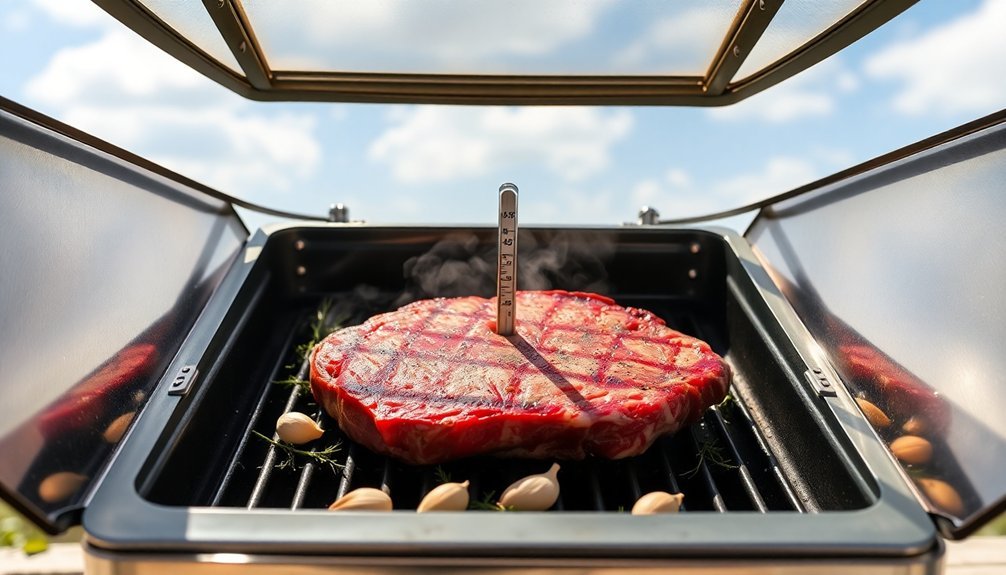For perfect solar-cooked meats, you'll want to focus on three vital factors. First, maintain temperatures between 150-225°F for most dishes, using a reliable thermometer to monitor internal temperatures throughout cooking. Second, choose dark cookware like Granite Ware pots, which absorb and convert sunlight to heat more efficiently than light-colored alternatives. Third, don't skip the essential resting period – let your meat rest for at least 30 minutes under loose foil to redistribute juices and guarantee tenderness. These fundamental tips will elevate your solar cooking game, but there's much more to mastering this eco-friendly cooking method.
Proper Temperature Control Matters

When using a solar oven, maintaining the right temperature range is essential for successful cooking. You'll want to keep temperatures between 150-225°F for most dishes, though your specific cooker type will determine maximum heat capabilities.
Parabolic cookers can reach 700°F, while box and panel cookers top out at 400°F and 300°F respectively.
To get started, preheat your oven for about 20 minutes in strong sunlight to reach 300°F. Always use a thermometer to monitor internal temperatures accurately. Type-K thermocouples provide the most precise temperature readings for solar cooking.
During peak cooking hours (10 AM to 4 PM in summer months), you'll achieve the best results. Remember that different weather conditions will affect your cooking times – on cloudy days, you might need to double your usual cooking duration to achieve the desired temperature and doneness.
Dark Cookware for Better Results
Beyond managing temperature, your choice of cookware plays a key role in solar cooking success. You'll get the best results using dark, thin metal pots and pans with tight-fitting lids. Dark cookware absorbs sunlight more efficiently, converting it into heat that cooks your food faster. Using high-temperature barbecue paint on your cookware's interior surface can help maximize heat absorption.
If you're using Granite Ware pots, you're already on the right track – their dark surface is perfect for solar cooking.
Don't have dark cookware? Simply cover your light or shiny pots with a dark hand towel. When selecting lids, opt for tempered glass to prevent shattering.
Rest Before Serving

Although solar cooking requires patience throughout the process, the waiting isn't over once you remove your food from the oven.
You'll need to let your meat rest for at least 30 minutes to achieve the best results. During this time, the juices redistribute throughout the meat, making it more tender and preventing it from drying out when you slice it.
Cover your meat loosely with foil and place it on a stable surface away from drafts. Don't wrap the foil too tightly, as this can create unwanted steam.
While the meat rests, you can check its doneness by using a thermometer or making a small cut to examine the center's color. Using a solar oven produces more tender and juicy meat compared to traditional ovens. This resting period isn't just about waiting – it's essential for maintaining the meat's texture, flavor, and moisture content.
Frequently Asked Questions
Can I Use Frozen Meat in a Solar Oven?
Yes, you can use frozen meat in a solar oven. You'll need to place it early in the morning, letting it thaw safely as the oven heats up. Just make certain it reaches proper internal cooking temperatures.
How Do I Prevent Meat From Drying Out While Solar Cooking?
To prevent meat from drying out, you'll want to use fatty cuts, brown them first, add moisture-rich vegetables, and cook in dark, tightly-sealed pots. Don't over-trim fat or frequently open the lid.
What Seasonings Work Best for Solar-Cooked Meats?
You'll get great results with rosemary, thyme, and mixed garden herbs. Don't forget basic salt and pepper. Try Indian curry blends or Spike seasonings for bolder flavors. Marinades work well with cast iron pots.
Should I Add Liquid to the Pot When Solar Cooking Meat?
Yes, you'll want to add liquid when solar cooking meat. It helps maintain moisture, prevents drying out, and adds flavor. You can use broth, wine, or marinades, but don't overfill the pot.
Can I Safely Cook Poultry in a Solar Oven?
Yes, you can safely cook poultry in a solar oven if you maintain temperatures between 200-300°F and guarantee the internal temperature reaches 165°F. Monitor closely with a digital thermometer during peak sunlight hours.
In Summary
You'll get the best results from your solar oven meats by following these key tips: maintain steady temperatures by adjusting your reflectors, use dark-colored pots and pans to maximize heat absorption, and let your meat rest after cooking. Whether you're making chicken, beef, or pork, these fundamentals will help guarantee your solar-cooked meats turn out tender, juicy, and perfectly done every time.





Leave a Reply